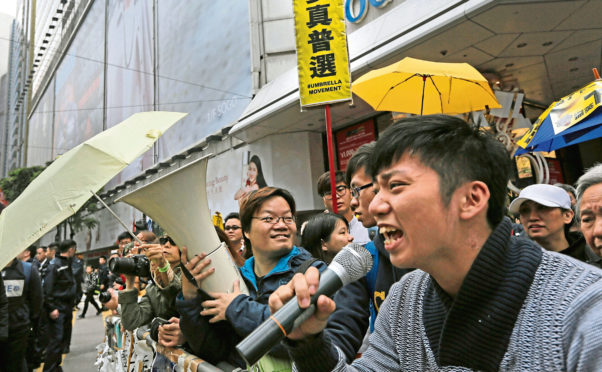Boris Johnson says three million Hong Kong residents could move to the UK. How that fits in with the anti-immigration policy of the Conservatives and the racism that drives some of the Brexit debate is not clear. But it has precedence.
Britain’s lease on the colony was due to end in 1997. As this date approached, London wanted to negotiate a treaty which allowed Hong Kong to thrive but protected its citizens from some form of crackdown by Beijing.
The problem was that London had no leverage in any negotiation, no alternative to offer the people of Hong Kong. This led to some exotic thinking.
Official papers from 1983 reveal Margaret Thatcher’s government discussed moving the entire population of the colony to another problematic territory, Northern Ireland. Perhaps the thinking was two birds, one stone – outwit Beijing while diluting the sectarian population of Belfast.
It’s not clear if the idea was serious or fanciful but Dublin and London were at the early stages of what would become known as the Anglo-Irish talks, a stab at a consensual peace deal for the whole of Ireland and Britain. Moving Hong Kong to the troubled province might have been seen as a game-changing ploy.
The idea of mass transition was not new. Citizens from former colonies had come in from Pakistan, India, Bangladesh, Kenya, Uganda and the West Indies. Britain’s existing Chinese population was largely from Hong Kong. To allow more in was in keeping with post-empire policy.
A more outrageous version would be suggested by the admirably bonkers Adam Smith Institute in 1989. The thinktank said Hong Kong should be relocated to the Isle of Harris. Silk merchants would mix with tweed weavers, junks would bob alongside trawlers, chicken feet would be served alongside haggis.
A Scotland weary of Thatcherism howled at the lunacy of the scheme.
The institute later described the plan as “cheeky” but it was taken seriously at the time. Could the entrepreneurialism of the Hong Kong Chinese survive a Hebridean winter? How would people eat when the nearest decent Chinese restaurant was miles away on the mainland?
It played on the idea that Scots had historically built the banks and wealth of Hong Kong, so maybe the favour could be returned. We will never know.
British immigration policy has contributed hugely to national wealth, but caused social divisions. The electorate has been encouraged to resent non-white incomers as job stealers. From Powell’s “rivers of blood” to Brexit, the threat of the foreigner has been a vote winner.
Arguably, the fear of outsiders is what accounts for Boris Johnson’s 80-seat majority, based on his determination to “get Brexit done”.
The simple notion is that foreigners damage Britain’s best interests, therefore Britain will be better off with its borders closed, or more vigorously controlled.
Quite how this stacks up against the evidence of lockdown and the NHS love-in is unclear. Non-white communities in Britain have been at the forefront of the virus response and appear to have died in greater proportion. On this, British nationalism entertains its own double-think.
If some of us hold conflicting ideas, it’s only human. When Johnson does, it’s usually cynical. He has no intention of letting three million people into the country. It upsets the voters who support him, quite apart from being a shock to public services.
Economically, in the long run, it might be a boost to Britain’s post-virus, post-Brexit woes, but how the Tories would sell the idea of Britain’s largest ever immigration to the people is unknown, even by Johnson.
The prime minister has raised the notion because it suits his style of government. The grand gesture always trumps the details. His government is in real trouble. He’s blown a lot of trust from the notorious Dominic Cummings affair, the handling of the government’s virus response has been shambolic and all he’s got to cling to is Brexit.
The rush to quit Europe and all that it brings looks ever more like the desperate last act of a suicidal man. There is something horrifying and humiliating in the focus on Brexit when the country is in a pandemic. The bold threats of no deal almost smack of “If I’m going down, I’m taking you all with me”.
In the run-up to 1997, London and Beijing agreed a deal for Hong Kong. It wasn’t perfect, but the UK Government was clear on one thing, announcing “the alternative to the acceptance of the present agreement is to have no agreement”.
As an Adam Smith Institute assessment of the Hong Kong situation would later summarise, the UK position was “a flawed deal is better than no deal”.
Boris isn’t opening the gates to three million new Britons. He is just creating noise and smoke while he grapples with the notion that a flawed EU deal might be better than none. He talks of Hong Kong to distract, to “move on” from what is shaping up to be Britain’s nadir.
Johnson would like to keep alive the idea that Britain can fight its corner when it can’t even fight off a virus.











